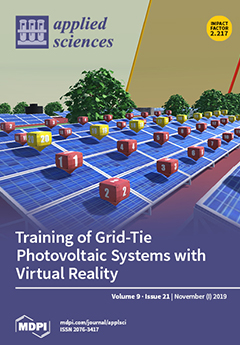In this study,
Arthrospira platensis was grown in the presence of different glycerol concentrations (0.5–9 g/L) under three light intensities (5, 10 and 15 Klux) in semi-continuous mode and under non-axenic conditions. The aim of this study was to investigate the growth performance,
[...] Read more.
In this study,
Arthrospira platensis was grown in the presence of different glycerol concentrations (0.5–9 g/L) under three light intensities (5, 10 and 15 Klux) in semi-continuous mode and under non-axenic conditions. The aim of this study was to investigate the growth performance, the biomass biochemical composition and any interactions between
A. platensis and bacteria that would potentially grow as well on glycerol. The results here show that glycerol did not have any positive effect on biomass production of
A. platensis. In contrast, it was observed that by increasing glycerol concentration the growth performance of
A. platensis was restricted, while a gradual increase of bacteria population was observed, which apparently outcompeted and repressed
A. platensis growth. Chlorophyll fluorescence measurements (Quantum Yields) revealed that glycerol was not an inhibiting factor
per se of photosynthesis. On the other hand, cyanobacterial biomass grown on glycerol displayed a higher content in proteins and lipids. Especially, protein productivity was enhanced around 15–35% with the addition of glycerol compared to the control. In distinction, carbohydrate and photosynthetic pigments (phycocyanin and chlorophyll-
α) content decreased with the increase of glycerol concentration. The results here suggest that
A. platensis did not utilize glycerol for biomass production but most probably as metabolic energy carrier towards synthesis of proteins and lipids, which are more energy consuming metabolites compared to carbohydrates. The study revealed that the addition of glycerol at amounts of 0.5–1.5 g/L could be a strategy to improve protein productivity by
A. platensis.
Full article





